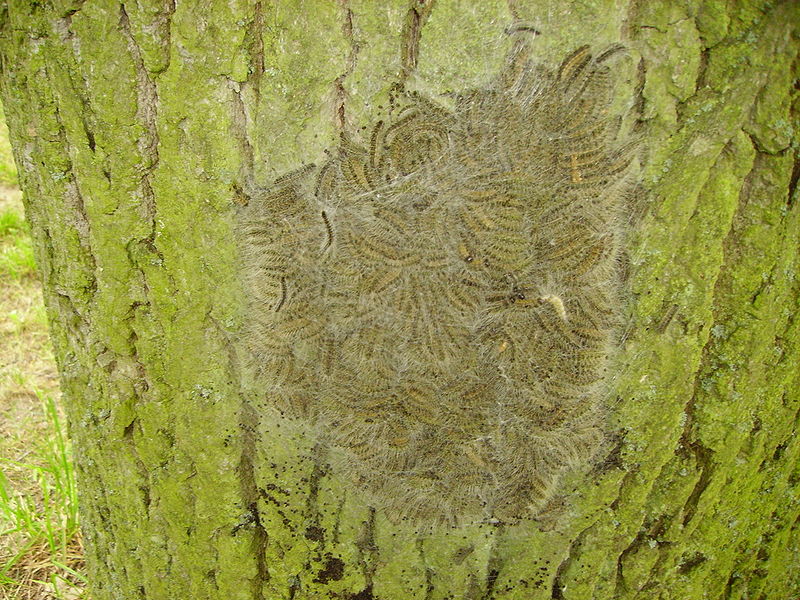The Oak Processionary Moth is a serious pest, not only for oak trees but also for human health.
The oak processionary moth
The oak processionary moth (OPM) Thaumetopoea processionea gets its common name from its habit of moving along oak (it’s food plant) in processionary columns. It is a species native to southern Europe, which spread northwards during the late 20th Century, being recorded first in the Netherlands in 1991, and then Belgium, France and Germany soon afterwards.
Colonies of the OPM in the UK were first discovered in 2006, in a housing estate in the London Borough of Richmond. It was identified after a large number of local people reported skin rashes. It is apparent that the OPM had arrived on imported Cypress oak (Quercus robur f. fastigiata) trees. Colonies were sighted later at Brent, Ealing, Hounslow and Richmond Upon Thames, including Royal Botanic Gardens Kew. The OPM colonises urban areas readily, preferring warm, sunny and sheltered sites for breeding. In 2010 a new infestation was spotted west of London, at Pangbourne in Berkshire (source). It is likely that milder winters and fewer Spring frosts may be contributing to population expansion (read more about trees pests, climate change and global trade).
Significant resources have been expended in attempts to control OPM. In 2011, Richmond Park alone will be spending £50,000 in attempting to control it (source). Initial confidence that the first colonies across London could be contained has given way to real fear that OPM may now be out of control:
“The area affected by OPM is growing steadily. It seems possible that attempts to eradicate the pest may fail … despite the hard work and effort put in by many organisations and individuals, we may be on the brink of failure.”
London Tree Officers Association website (accessed 3rd May 2011)
Effects of OPM on oak trees

Oak trees colonised by OPM can be seriously defoliated and there are reports of tree death in some instances. However, the trees will normally recover and leaf the following year. On the European continent OPM has also been reported on beech, silver birch, hazel, hornbeam, and sweet chestnut but normally only when neighbouring infested oak trees. Oak trees under 2m in height are not normally colonised.
Human health
The caterpillars of the third to sixth instars have poisonous hairs or setae that carry a toxin that can cause serious irritation to the skin, eyes, nose and throat of humans and other animals. If inhaled they can cause respiratory distress, asthma and even anaphylactic shock. Read more.
Not only should the caterpillars never be touched but even being in proximity to them can be dangerous as their hairs can be carried in the wind.
Reporting
 You should never attempt to handle the caterpillars or disturb their nests.
You should never attempt to handle the caterpillars or disturb their nests.
If you suspect an incidence of oak processionary moth, sightings can be reported to Forest Research by telephoning 01420 22255 or by e-mail to christine.tilbury@forestry.gsi.gov.uk.
Gabriel Hemery
 This work is licensed under a Creative Commons Attribution- NonCommercial- NoDerivs 3.0 United States License.
This work is licensed under a Creative Commons Attribution- NonCommercial- NoDerivs 3.0 United States License.
